

Let’s face it, nobody likes moving. All the packing, loading, carrying, lifting, unpacking. There’s probably nothing more unpleasant to go through, even when you’re moving to a better place and looking forward to moving in.
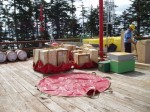
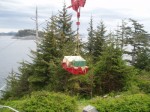
But try compounding that with the almost insurmountable obstacle of living on an island. Not just any island, but a remote island with no ship docking facilities, and no aircraft facilities beyond a helicopter pad. That’s
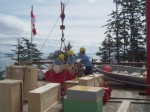
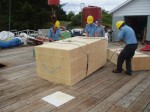
exactly what a
friend of mine was doing here. Glenn is a member of the Canadian Coast Guard, and was at the time the principal lighthouse keeper at McInnes Island Lightstation, but had received orders for a change of station. Check out these aerial views of the island he lived on. (photos #1 & #2)
Yeah, you just thought moving was a pain. Glenn provided me with a little photo-essay to show us what he went through, and I decided to share it with you. The thoughts and sentiments are his, and the photos illustrate the story well.
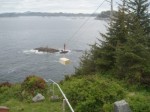
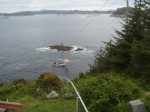
This is the method. It’s called a “highline”, (photo #3) and it’s a lifting device to get items either down to a work boat, or up to the island.
This was the largest of the crates he built, (photo #6)
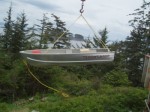
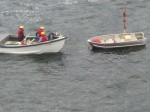
and it contains his leather couch. He left nothing to chance when he moved. The couch was first blanketed, then cardboard was applied, then plastic shrink wrap, then two layers of blue tarps (your typical camping tarps), then it was inserted
in the plywood crate. Glenn said “That puppy was going to arrive in good shape if I had ANYTHING to say about it.”
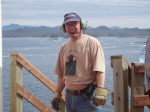
This is where it gets tricky. (photos #7 & #8) He had to lower the crate down into the workboat, without killing the deck hand whose job it was to get it into the boat. Remember, this is open ocean, and the swells are not cooperative for sure.
This was his beloved boat, (photo #9) which had been sold, and was also headed down the highline. This boat was his primary method of local transportation while on McInnes Island, and sending it down the highline was the only method of launching it. Once launched, he had to row out to it in a tiny wooden dinghy. It was towed behind the workboat out to the ship for transportation to its new owner.
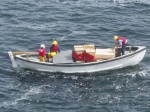
Getting it ready for towing out to the ship, (photo #10) where it will be lifted aboard by crane, along with a load of crates.
Another load ready for transport to the ship. (photo #12) So, there you have it. A day in the life of a lighthouse keeper who is moving to another station. It’s definitely NOT your usual city move.
– All uncredited photos and the text courtesy of Glenn Borgens (BC Lighthouse Keeper 1995 – Present)